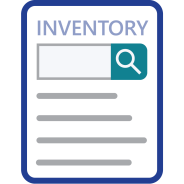
Choose from 5 options:
Use this list to check if your chemical has hazards in the highest human health and environment hazard bands.
It is a list of chemicals that trusted national and international sources consider to be highly hazardous to human health or the environment, with hazard characteristics that are in our highest hazard bands.
The names of trusted national and international sources are in Appendix 8.1 of the Industrial Chemicals Categorisation Guidelines, but we’ve compiled a list of these chemicals into one place to make it easier for you to search for them.
You need to use this list if you are working out your introduction’s category – as exempted, reported or assessed and our guidance tells you to search it to demonstrate that your chemical does not have certain hazard characteristics.
The list is a compilation of chemicals from each of the trusted sources. We have not removed chemicals that are on our Inventory and have only removed entries that could unambiguously be shown to not be industrial chemicals.
We have not done our own assessment of all the chemicals on the list.
Download the list of chemicals with high hazards for categorisation and follow these steps:
Step 1 (CAS number): Search for your chemical’s Chemical Abstracts Service Registry Number (CAS RN or CAS number) using the filter icon in Column A of the ‘Consolidated list’ tab.
If the CAS number:
Even if you find the CAS number on the list, it is important that you also check the information under ‘chemical name’ in Column B to ensure that the substance is covered by the list entry and is therefore considered to have the high concern hazard characteristics.
Example: Margosa, ext. (CAS number 84696-25-3) – CAS number covers multiple extracts
Company ABC Pty Ltd uses a CAS number to locate the entry for Margosa, ext. (CAS number 84696-25-3) on the list. The company checks the information under ‘chemical name’ (Column B):
‘Margosa,ext. [from the kernels of Azadirachta indica extracted with water and further processed with organic solvents]’
Company ABC Pty Ltd notes that the entry specifies that the kernel extract has been found to have high concern hazard characteristics. The company plans to introduce an extract from a different part of the plant. This means that the company’s chemical is not covered by the entry for Margosa, ext. (CAS number 84696-25-3) and therefore is not currently on the list.
Step 2 (Chemical name): Search for your chemical name using the filter icon in Column B of the ‘Consolidated list’ tab.
If your chemical name:
Step 3 (Group entries): Is your chemical covered by a chemical group entry? There are some group entries on the list, such as compounds of certain metals.
Step 4 (Salts or esters): Is your chemical a salt or an ester?
To do this, identify the component chemicals and their CAS numbers and chemical names. Then search the tables of specified chemicals for the CAS number and chemical name of the component chemicals.
If your chemical:
then your chemical (and the chemical of which it is an ester or salt) is not on the list. For more information, see What happens if your chemical is not on the list?
If your chemical:
then your chemical (and the chemical of which it is an ester or salt) is not on the list. For more information, see What happens if your chemical is not on the list?
If your chemical:
then the chemical of which your chemical is an ester or salt, is on the list, and your chemical is also considered to be highly hazardous.
The hazard characteristic(s) that your chemical is considered to have will align with the parts of the Categorisation Guidelines that the specified chemicals are listed in. For example, an ester containing phenol, 4,4'-(1-methylethylidene)bis- (Bisphenol A) (CAS number 80-05-7) would be considered to have the following hazard characteristics, unless any exception criteria were met:
For more information, see What happens if your chemical is on the list?
If your chemical, or the chemical of which it is an ester or salt, is not on the list, it could still be highly hazardous. For example, there may be hazard information available for your chemical outside of the sources identified in the list showing that it has a hazard characteristic.
Read our guide to categorising your chemical importation and manufacture to help you work out whether you need any other information (aside from checking the list) to demonstrate the absence of a particular hazard characteristic.
If:
we consider your chemical to have one or more of the hazard characteristics in the highest hazard bands. This means hazard band C for human health, or hazard bands D or C for environment.
Depending on your introduction’s circumstances, this may mean that your introduction is categorised as assessed. Read our guide to categorising your chemical importation and manufacture to help you work this out.
If you have additional information that you believe demonstrates that your chemical is not highly hazardous, we can consider this as part of our assessment of your chemical. But, for the purposes of categorisation, your chemical will still be considered to have that hazard characteristic.
Note: Some chemicals on the list are also on our Inventory. If your chemical is on our Inventory, it is eligible for the listed category – as long as you meet the terms of the inventory listing (for example, you are introducing within the parameters of a defined scope of assessment).
We plan to update the list annually (or as required) to include:
We will publish website notices to tell you before this happens.
Entries from the trusted national and international sources of the list that are unambiguously not industrial chemicals will not be added to the list. That is, entries that: